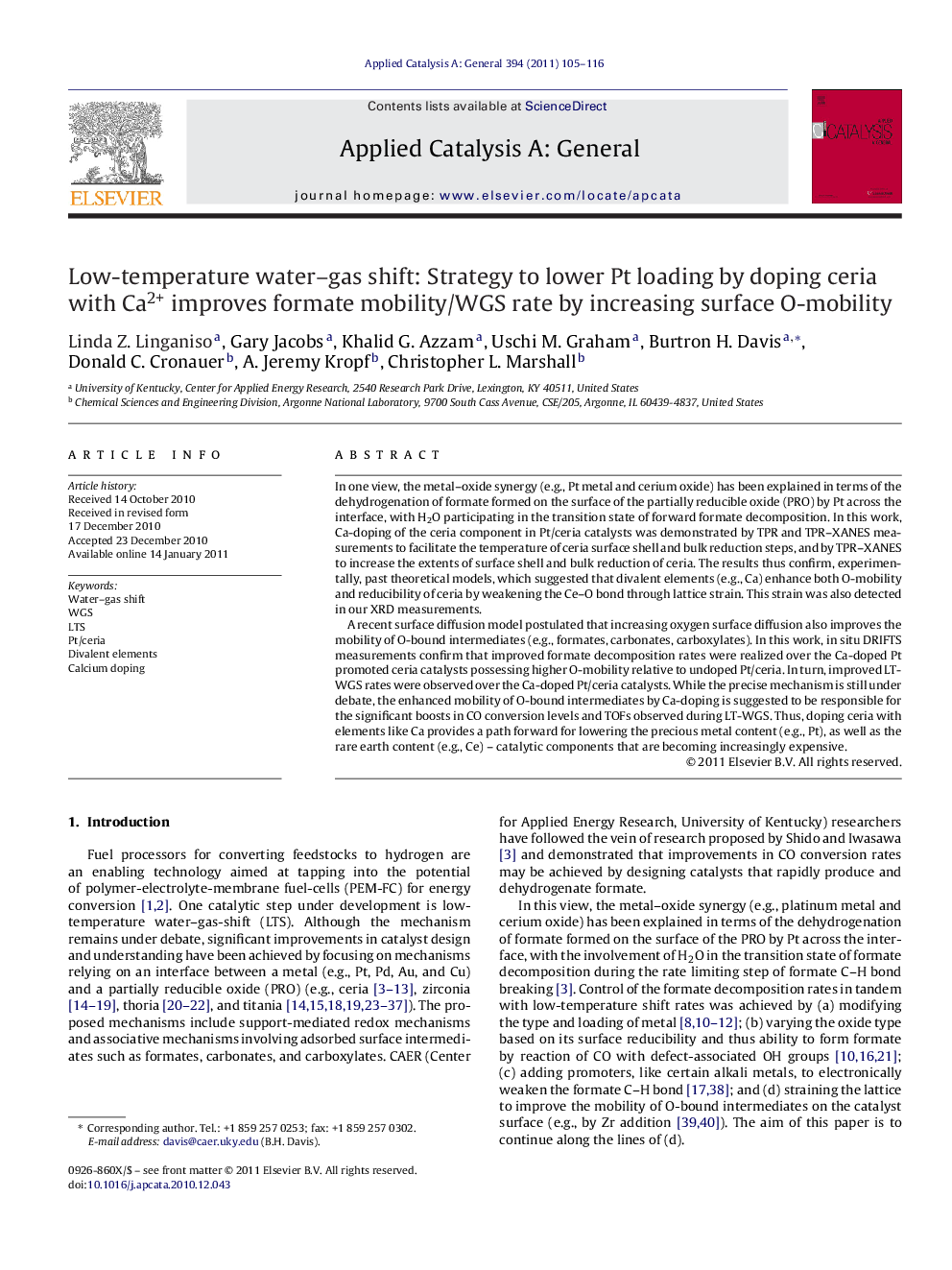| کد مقاله | کد نشریه | سال انتشار | مقاله انگلیسی | نسخه تمام متن |
|---|---|---|---|---|
| 41470 | 45890 | 2011 | 12 صفحه PDF | دانلود رایگان |

In one view, the metal–oxide synergy (e.g., Pt metal and cerium oxide) has been explained in terms of the dehydrogenation of formate formed on the surface of the partially reducible oxide (PRO) by Pt across the interface, with H2O participating in the transition state of forward formate decomposition. In this work, Ca-doping of the ceria component in Pt/ceria catalysts was demonstrated by TPR and TPR–XANES measurements to facilitate the temperature of ceria surface shell and bulk reduction steps, and by TPR–XANES to increase the extents of surface shell and bulk reduction of ceria. The results thus confirm, experimentally, past theoretical models, which suggested that divalent elements (e.g., Ca) enhance both O-mobility and reducibility of ceria by weakening the Ce–O bond through lattice strain. This strain was also detected in our XRD measurements.A recent surface diffusion model postulated that increasing oxygen surface diffusion also improves the mobility of O-bound intermediates (e.g., formates, carbonates, carboxylates). In this work, in situ DRIFTS measurements confirm that improved formate decomposition rates were realized over the Ca-doped Pt promoted ceria catalysts possessing higher O-mobility relative to undoped Pt/ceria. In turn, improved LT-WGS rates were observed over the Ca-doped Pt/ceria catalysts. While the precise mechanism is still under debate, the enhanced mobility of O-bound intermediates by Ca-doping is suggested to be responsible for the significant boosts in CO conversion levels and TOFs observed during LT-WGS. Thus, doping ceria with elements like Ca provides a path forward for lowering the precious metal content (e.g., Pt), as well as the rare earth content (e.g., Ce) – catalytic components that are becoming increasingly expensive.
O-Mobility/oxide reducibility enhanced with Ca-doping. Transport of O-bound intermediates also improves, increasing LTS rates.Figure optionsDownload high-quality image (204 K)Download as PowerPoint slideResearch highlights▶ XCO during LTS increases with Ca level from 0.5% Pt/CeO2 to 0.5% Pt/Ca0.50Ce0.50O1.5. ▶ TPR–XANES demonstrates that Ca doping enhances O-mobility/reducibility. ▶ Improved O-mobility translates to increased mobility of O-bound intermediates. ▶ HR-TEM indicates that the Pt size was similar for undoped and Ca-doped catalysts. ▶ XRD/HR-TEM reveal oxide morphology changes and lattice strain with Ca-doping.
Journal: Applied Catalysis A: General - Volume 394, Issues 1–2, 28 February 2011, Pages 105–116